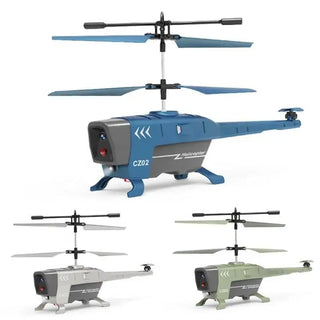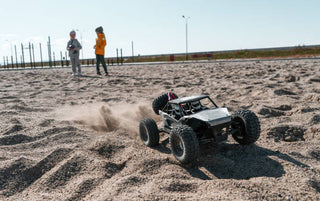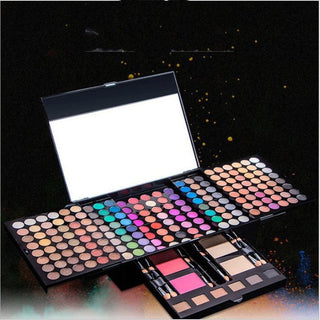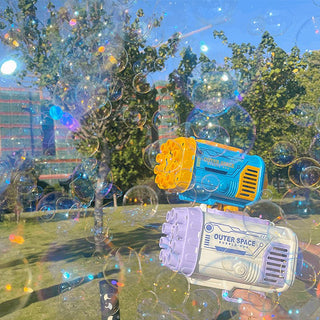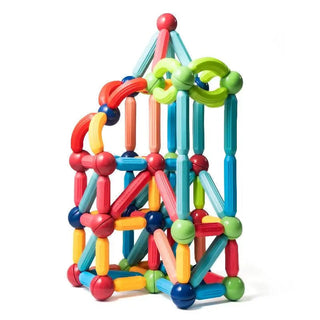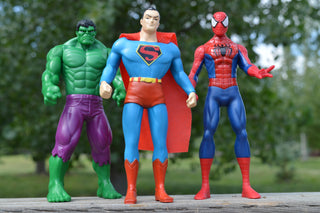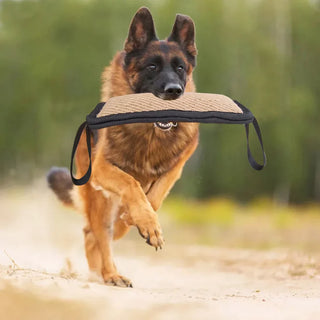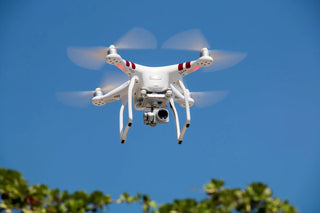Ever looked up at the night sky and seen something weird? Maybe a blinking light that doesn't quite look like a plane, or a silent, moving dot that isn't a star? It's probably a drone! With more and more drones flying around, especially after dark, it's pretty normal to wonder, what does drones look like at night? This article will help you figure out what you're seeing, whether it's a hobbyist's toy, a delivery drone, or something else entirely. We'll go over how to spot them, tell them apart from other sky objects, and even what to look for in different weather.
Key Takeaways
- Consumer drones at night usually have blinking colored lights (red, green, white) and often make a distinct buzzing sound, which helps you spot them in suburban, rural, or urban areas.
- To tell a drone from a star or plane, look for specific movement patterns; drones might hover, change direction quickly, or have multiple lights, while planes move steadily and stars don't move much.
- Weather conditions like wind, clouds, or rain can change how easy it is to see or hear a drone; for example, clouds can make lights stand out more, but wind can mask sounds.
- Tools like binoculars, night vision devices, or thermal cameras can really help you see drones better at night, especially if they're far away or don't have bright lights.
- Military and law enforcement drones are often designed to be hard to see at night, sometimes having no visible lights or using infrared, so they look very different from civilian drones.
Spotting Consumer Drones at Night

Consumer drones are those common quadcopters used by hobbyists, photographers, and recreational fliers. You're most likely to encounter them buzzing around neighborhoods or parks after sunset. It's useful to know how to identify them for your peace of mind.
Suburban Areas
In the suburbs, the night skies are a bit darker than in the city, and it's usually quieter late at night. You might have streetlights or yard lights around, but there are more gaps of open, dark sky to spot a drone's lights. Scanning the sky for out-of-place lights is the first step.
There is still some ambient noise (distant traffic, neighbors, insects), but during a calm night, you have a better chance of hearing a drone's buzz than in a city. Step outside and listen if you think a drone is around – you might catch the faint whine of propellers between other sounds. Visually, scan for any moving light that doesn't fit the pattern of an airplane (for example, a small light hovering or doing short back-and-forth moves). Using binoculars can help in the suburbs if you see a blinking light: you might resolve it into multiple lights on a single object or see it change direction, confirming it's a drone. Also, many consumer drones have red/green lights that indicate front/back; if you see a tiny light that changes from red to green and back as it maneuvers, that's a giveaway. If you are having trouble with your internet security, you may want to contact your ISP.
Rural Settings
Rural settings offer the best chance to spot drones at night due to minimal light and noise pollution. Here's what to consider:
- Dark Skies: With fewer artificial lights, even faint drone lights are easier to spot. Look for any unusual light source that doesn't match the stars.
- Quiet Environment: The buzzing sound of a drone is much more noticeable in a quiet rural area. Listen for any unusual humming or whirring sounds.
- Open Spaces: The lack of buildings and trees provides a wider field of view, making it easier to track the movement of drones.
In rural areas, pay close attention to the edges of fields or forests, as these are common areas for drone operation. Also, be aware of the presence of livestock, as drones can sometimes be used for monitoring herds.
Urban Environments
Spotting drones in urban environments presents unique challenges due to the abundance of light and noise. Here's how to increase your chances:
- Look Upward: Focus your attention on the sky above the city lights. Drones often operate above the immediate glare of streetlights and buildings.
- Listen Carefully: Filter out the constant urban hum and listen for the distinct buzzing sound of a drone. It may be faint, but it's often distinguishable from other city noises.
- Use Building Shadows: Position yourself in the shadow of a tall building to reduce the amount of ambient light and improve your ability to spot faint lights. Consumer drones are often equipped with small LED lights for navigation and orientation. These can be red, green, or white lights mounted on the drone’s arms or body. At night, these LEDs often appear as tiny, bright dots that may blink or change color to indicate front/back or other statuses. Regulations in many areas (like FAA rules in the U.S.) require drones flying at night to have at least one anti-collision light visible from a considerable distance (up to 3 miles/5 km). If you see a single bright flashing light in the sky at night, there’s a good chance it could be a drone’s required safety light rather than a star.
Distinguishing Drones from Stars, Aircraft, and Other Objects At Night
It's easy to mistake things in the night sky. A bright star, a plane miles away, or even a satellite can look like a drone at first. So, how do you tell the difference? It takes a little practice and knowing what to look for. Let's break it down.
Drone vs. Stars and Satellites
Stars twinkle, but drones don't (usually). Stars are incredibly far away and appear as fixed points of light, while satellites move at a steady pace across the sky. A drone's light might flicker, but it will also move erratically or hover. Satellites, on the other hand, maintain a consistent trajectory. If you see something that's not moving at all relative to other stars, it's probably a star. If it's moving in a straight line, it's likely a satellite. If it's buzzing around, it might be a drone. Listen carefully; stars don't make noise, but drones do. You can use astronomy tools to help you distinguish them.
Drone vs. Aircraft
At a distance, drones and airplanes can look similar because they both have lights. However, there are key differences. Airplanes have navigation lights (usually red and green) and move in a predictable way. Drones, especially smaller ones, often have a single, bright anti-collision light.
Here's a quick comparison:
| Feature | Drone | Aircraft |
|---|---|---|
| Movement | Erratic, hovering, sudden changes | Straight lines, gentle curves |
| Altitude | Lower | Higher |
| Sound | High-pitched buzz | Deep roar or throbbing sound |
| Lighting | Single bright light, sometimes flashing | Navigation lights (red/green), strobes |
Under U.S. rules, drones flying at night need only have one bright anti-collision light visible from three miles away – so you might just see a single point flashing.
Also, consider the sound. A jet plane or helicopter will produce a deep sound you can hear from far away. A drone has that distinctive high-pitched buzz. If a plane is high enough to be nearly silent, it will also be visibly moving like a typical plane, not hovering. If you are unsure, you can use flight tracking apps to identify the aircraft.
Drone vs. Bird/Bat
This one can be tricky, especially if the drone is flying low. Birds and bats don't have lights (usually), so if you see a light, it's probably not a bird or bat. However, some larger drones can resemble birds in flight, especially at dusk or dawn. Look for the telltale buzzing sound of a drone motor. Also, birds and bats tend to move more organically, while drones have a more mechanical movement. Here are some things to consider:
- Flight Pattern: Birds and bats have natural, flowing movements. Drones can make sharp, unnatural turns.
- Sound: Drones have a distinct buzzing sound. Birds chirp or flap their wings. Bats are often silent.
- Size and Shape: Drones often have a more rigid, symmetrical shape than birds or bats.
- Lights: Most birds and bats don't have lights. If you see a light, it's likely a drone or other object. If you are unsure, you can use wildlife identification guides to help you.
How To Spot A Drone In at Night In Different Weather
Weather definitely throws a wrench into spotting drones at night. Some conditions make it harder to see or hear them, while others might actually help you out. Let's break it down.
Wind Conditions
Wind can be a real pain when you're trying to spot a drone. Strong winds not only make it harder for drones to fly steadily, but they also carry away the sound of the drone's motors. This means you might not hear that telltale buzzing sound that usually gives them away. Plus, if the wind is really howling, it can create other noises that drown out the drone completely. Drones will struggle to maintain a steady position, making their movements erratic and harder to predict. If you're in an area prone to gusts, your chances of spotting a drone decrease significantly.
Clouds and Moonlight
Clouds and moonlight play a big role in how well you can see at night. Overcast skies will make it super dark, reducing visibility and making it tough to spot even the brightest drone lights. On the other hand, a full moon can actually help a bit. It provides some ambient light, which might let you catch a reflection off the drone's body. However, moonlight also brightens the sky in general, which can reduce the contrast between the drone's lights and the background. It's a trade-off. If you're trying to spot a drone on a cloudy night, you'll have a much harder time than on a clear night with a full moon. Consider using night vision devices to improve visibility.
Rain and Fog
Rain and fog are probably the worst conditions for drone spotting. Rain can obscure your vision, making it difficult to see anything clearly, and fog acts like a thick blanket, reducing visibility to almost nothing. Plus, most drone operators aren't going to fly in these conditions anyway, since it can damage the drone. The combination of reduced visibility and fewer drones in the air means your chances of spotting one are slim to none. If you're dealing with rain or fog, it's best to assume you won't be able to see any drones at all.
Generally, good weather equals good drone-spotting. Adverse weather makes it much harder to see or hear drones (and usually discourages drones from flying in the first place).
Tools and Techniques for Enhanced Nighttime Drone Spotting
Sometimes, just your eyes aren't enough to spot a drone at night. Luckily, there are some tools that can help you out.
Binoculars and Telescopes
Binoculars are a great first step. They can help you get a closer look at any lights you see in the sky. Sometimes, what looks like a star might actually be a drone, and binoculars can help you confirm that. If you have a telescope, that's even better. A telescope can show you more details, like the shape of the drone, if it's not moving too fast. Just be careful not to mistake lens flares for extra lights!
Night Vision Devices
Night vision goggles can really change the game. They amplify even the smallest amount of light, making the night sky much brighter. This can help you spot drones that have dim lights, or even no lights at all. Some drones use infrared LEDs, which are invisible to the naked eye, but night vision can pick them up. Even if a drone has no lights, a good night vision device might let you see a faint outline against the sky. Keep in mind that consumer night vision can be expensive. There are apps that try to turn your phone into a night vision device, but they don't work very well. If you're serious about night vision, invest in a good device.
Thermal Imaging Cameras
Thermal cameras detect heat, so they can spot drones by the heat they give off. This is especially useful if the drone isn't using any lights. The drone will show up as a bright spot against the cooler background of the sky. Thermal imaging can be expensive, but it's a very effective way to spot drones at night.
Using tools like binoculars, night vision, and thermal cameras can greatly improve your ability to spot drones at night. Remember to practice using these tools and familiarize yourself with the different types of drones you might encounter. This will help you quickly and accurately identify drones in the night sky.
Understanding Military and Law Enforcement Drones at Night
When darkness falls, drones from official outfits behave in ways that differ from your typical hobby quad. Before you get into the details, remember that official sites on drone operations can send you through an access control challenge—just like any page with tight security.
Characteristics of Military Drones
These big unmanned vehicles aim to slip under the radar—literally. Most will fly with zero visible lighting. Here’s how to tell:
- No running LEDs or colored navigation lights.
- Low sound signature; sometimes you might hear only a faint hum.
- High cruising altitudes (often above 20,000 feet).
- Infrared strobes visible only with night-vision gear.
| Drone Model | Wingspan | Cruise Altitude |
|---|---|---|
| MQ-9 Reaper | 66 ft | 25,000 ft |
| RQ-20 Puma | 9 ft | 10,000 ft |
| Grey Eagle | 56 ft | 26,000 ft |
Law Enforcement Drone Operations
Police forces and sheriffs use smaller, more visible models. You might catch:
- Spotlights scanning streets.
- Flashing LEDs in blue or red.
- A steady whirr from rotors.
They usually stay under 500 feet, watching traffic jams or crowd events.
A drone circling low with a bright floodlight probably isn’t a hobbyist’s toy—it’s most likely a copter from law enforcement.
Identifying Specialized Drones
Not every official drone fits military or standard police molds. Some carry special gear or are built for unique missions. Keep an eye out for:
- Bulky pods under the body (imaging or radar gear).
- Stabilized camera mounts that don’t flicker.
- Unique shapes, like tilt-rotors or VTOL setups.
| Mission Type | Gear Attached | Nighttime Cue |
|---|---|---|
| Border Watch | Radar pod | Silent, high-altitude |
| SWAT Recon | Zoom camera + mic | Low hover, targeted beam |
| Private Security | Loud rotors | Flashing white LEDs |
By spotting these details, you’ll get better at guessing who’s behind the controls after sunset.
Ever wonder how military and police drones fly around at night without anyone seeing them? It's pretty cool stuff! They use special tech to see in the dark, which helps them do their jobs. If you want to learn more about these amazing night-flying machines, come check out our website!
Wrapping It Up
So, there you have it. Figuring out what that light in the night sky is can be a bit tricky, but it's totally doable. Most of the time, it's just a regular drone, maybe someone having fun or doing some work. Knowing what to look for, like those blinking lights or that distinct buzzing sound, really helps. And yeah, sometimes it's just a star or a plane playing tricks on your eyes. But with a little patience and maybe a pair of binoculars, you can usually tell the difference. It's all about being aware and knowing the signs. Stay curious, and happy sky-gazing!
Frequently Asked Questions
How can I tell if something in the night sky is a drone?
Spotting a drone at night usually means looking for its lights. Most drones have blinking or steady lights, often white, red, or green. You might also hear a buzzing sound, especially if it's flying close by.
Should I be worried if I see a drone at night?
While it can be a bit spooky to see a drone at night, most of them aren't spying on you. They're usually hobby drones, commercial drones doing surveys, or even police drones. They have lights to make them visible and follow rules.
Where is the best place to spot a drone at night?
Drones are generally easier to spot in quiet, dark places like the countryside because their lights stand out more and their buzzing sound travels further. In cities, there's more light and noise, which makes them harder to notice.
How can I tell a drone apart from a star, airplane, or satellite?
It can be tricky! Stars twinkle but don't move much, and satellites move slowly without lights. Airplanes have specific blinking light patterns and move in a straight line. Drones often hover, move in zigzags, and have different light setups.
Does weather affect how well I can see a drone at night?
Wind can make it harder to hear a drone, and heavy rain or fog can hide its lights. But a cloudy night without rain can actually make drone lights stand out more against the dark clouds. Moonlight helps a bit too, by making the sky brighter.
Are there any tools that can help me spot drones at night?
For a better view, you can use binoculars to make the lights clearer or even see the drone's shape. Night vision goggles can help you see drones that have very dim or invisible infrared lights. Thermal cameras can even pick up the heat from a drone's engines.

